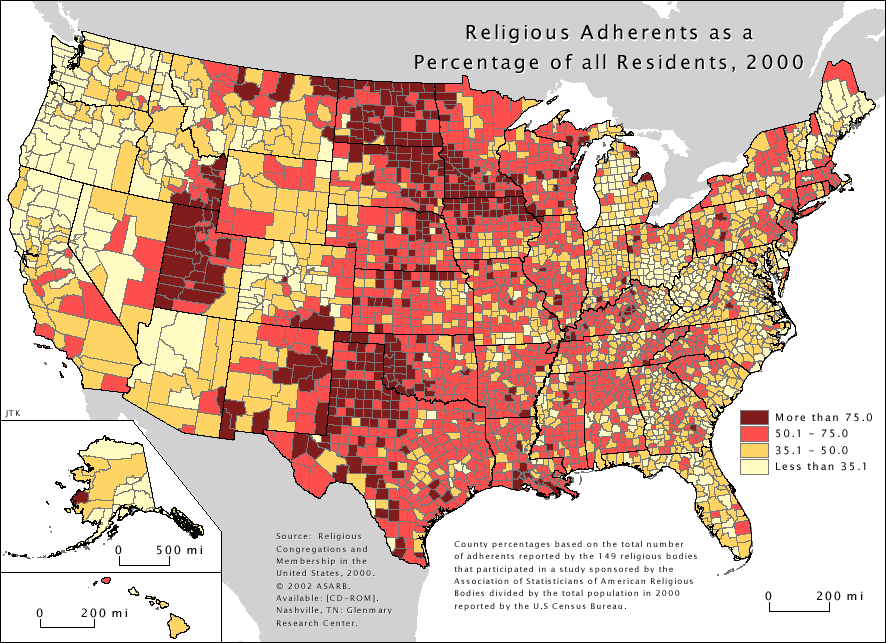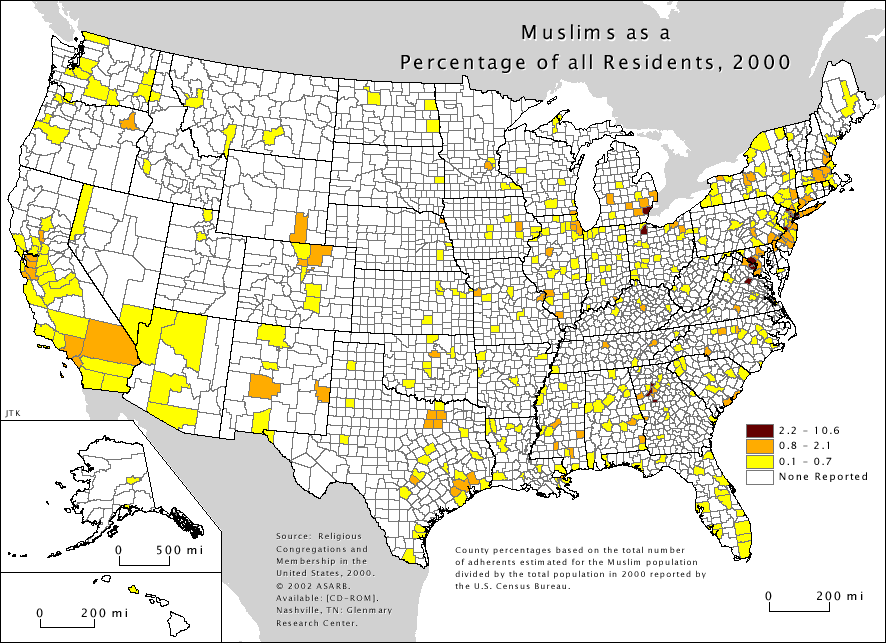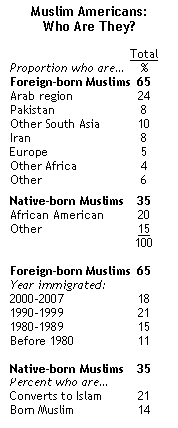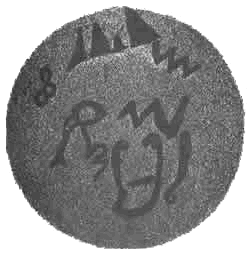Fall 2008, Volume 25.1
READING THE WEST
read-ing [from ME reden, to explain, hence to read] _ vt. 1 to get the meaning of; 2 to understand the nature, significance, or thinking of; 3 to interpret or understand; 4 to apply oneself to; study.
Religion in the West
The West is a religiously diverse region. It is the region of the United States with the highest percentage of its population who are not religious adherents. In support of his classes, Jon T. Kilpinen of Valparaiso University in Indiana has created a series of often reproduced maps based on Religious Congregations and Membership in the United States published by the Glenmary Research Center, most recently in 2000.

As is visible on the following map, most Muslims in the West live, as does everyone else, in the major population centers where water and resources are available.

Source: Jon T. Kilpinen, American Ethnic Geography, updated 2003; https://www.valpo.edu/geomet/geo/courses/geo200/religion.html.
Estevanico
The first known Muslim in the American West was probably Estevanico (ca.1500-1539). Also known as "Mustafa Zemmouri," "Black Stephen," "Esteban," "Esteban the Moor," "Estevan," "Estebanico," "Stephen the Black," "Stephen the Moor," and "Little Stephen," Estevanico was of North African origin, possibly from Azamor, Morocco. He was a slave in the party of some 300 men led by Spanish explorer Cabeza de Vaca, who left the Caribbean in 1528 and became stranded in North America. Estevanico and Cabeza de Vaca were among the four survivors who finally reached Spanish settlements in Mexico in 1538. The next year, Estevanico went with an expedition led by Fray Marcos de Niza to find the Seven Cities of Cibola.
Estavenico was killed by Zunis at their village of Hawikuh in northern New Mexico, who may have considered him a witch. The Estevanico Society, which once operated out of Abilene, Texas, to encourage scholarly research into the life and journeys of Estevanico, seems no longer to be in operation. However, in Tucson, Arizona, a park named for "Estaban" may possibly be the first park to be named for a black man (and Muslim) in the United States.
Sources: Black Student Union, Princeton University, Did You Know?, https://www.princeton.edu/~bsu/didyouknow.htm; Kynn Bartlett, Black Heritage Tour of Tucson, Arizona, #7, https://kynn.com/projects/heritage-tour/tour-07/; map from Enchanted Learning, https://www.enchantedlearning.com
African American Muslims
Estevanico was only the first of many Muslims who were part of the African diaspora. Some scholars estimate that 10 to20 percent of the several million slaves brought by Europeans into the Americas were Muslims. Aminah Beverly McCloud, director of the Islamic World Studies Program at DePaul University in Chicago, Illinois, reminds us of the significance of that heritage.
African American Muslims have roots in America that are centuries old, and more importantly, a history of social and political participation in the 20th and 21st centuries through their families and the general black community….
African Americans as a whole, and African American Muslims in particular, have made much of the immigrant Muslim comfort possible. Beginning in the late 1950s, African American Muslims began making name changes, introducing Arabic names to the general community. They also started demanding that federal prison officials provide halal (permissible according to Islamic law) meals, and permit daily prayers and Friday services—in effect putting Islamic practices on the federal landscape.
By the 1970s, African American Muslim women were settling lawsuits about the right to wear the headscarf in professional positions such as medicine, nursing and pharmacy. Many had been involved in making communities aware of the Civil Rights Act of 1964, which provided visas for immigrant Muslims.
Simultaneously, African American Muslims have been living in and visiting the Muslim world for half a century. Some have extensive familiarity as former students in the Middle East, while others have chosen to act as ambassadors to introduce the Muslim world to American Muslims and vice versa. Still others have built African American communities abroad where children spend summers in the United States and the school year in the Muslim world. Many African American Muslims speak some Arabic, and some are fluent in both language and culture….
African American Muslims are invested in both their country and their religion and have proven as much on numerous occasions, especially since September 11, 2001….They have much to offer that does not compromise either their American or Islamic heritage, and seek the best of both.
Source: Aminah Beverly McCloud, "Don’t forget African American Muslims," Common Ground News Service, 27 May 2008, https://www.commongroundnews.org; Rupee News, https://rupeenews.com.
Muslim Americans
The Pew Forum on Religion and Public Life released their report in July 2008. The Pew Research Center conducted more than 55,000 interviews to obtain a national sample of 1,050 Muslims living in the United States.
The resulting study, which draws on Pew’s survey research among Muslims around the world, finds that Muslim Americans are a highly diverse population, one largely composed of immigrants. Nonetheless, they are decidedly American in their outlook, values and attitudes. This belief is reflected in Muslim American income and education levels, which generally mirror those of the general public.
Source: https://pewforum.org/surveys/muslim-american
Pre-Colombian Muslims
Several web sites in the United States promote arguments that Arab map makers not only inspired Columbus to travel west in his 1492 search for a route to Asia from Europe, but that Arabs were in the Americas several centuries before his expedition. One area of supposed Muslim settlement during the seventh and eighth centuries is Nevada, based on research by controversial diffusionist H. Barraclough ("Barry") Fell (1917-1974). A Harvard biologist turned epigrapher, Fell acquired a following in 1976 with the publication of America B.C., which discussed the archaeological implications of epigraphy—the study of ancient man-made markings incised in stone, clay, wood, or bone.
Dr. Fell translated the inscription on this rock found at a dig in Nevada as being in old Cufic letters of North African Arabic: "In the Name of God."

Source: The Islamic Society of Nevada (ISON) has its roots in the Muslim Student Association at the University of Nevada Las Vegas. In 1984, some local residents established ISON, and in 1993 the first phase of the construction of the mosque began. In 1995, a school building was added to the mosque. http://www.lvmasjid.com/links/contact_us.asp. The Islamic Bulletin, published in San Francisco, is another organization promoting the notion of centuries of involvement by Muslims in the Americas.
www.islamicbulletin.org
Islamic Schools in the West
Among the many Islamic schools in the American West is Iqra Academy, part of the Islamic Society of Greater Salt Lake. Accredited since 2004 by the Northwest Association of Accredited Schools, the school is funded by students’ tuition and fees and by contributions from the community. The student body is a diverse group from 23 countries representing five continents. The school’s mission is
-
to provide students with excellent academic and Islamic education and a firm foundation of moral and ethical values.
-
to develop in every student a positive American-Muslim identity.
-
to prepare today’s students to become tomorrow’s leaders.
Source: https://www.iqraacademy.org/
Muslim Student Associations
Muslim Students Associations at Weber State University and the University of Utah are part of the National Muslim Student Association, which was established in 1963 at the University of Illinois at Urbana-Champaign by a conference of Muslim students from around the U.S. and Canada. At Utah Valley State College (now University), a nondenominational meditation area is being created on the fifth floor of its new $48 million library. Amy K. Stewart reported the story for the Deseret News.
"It will be a sanctuary where people can go to meditate or pray," said Val Hale, UVSC vice president for institutional advancement. However, the naming of the space has the potential for religious controversy….
UVSC has about 30 Muslim students enrolled. "Many desire a private place to pray five times a day," said Chaplain Linda Walton, who serves on the Interfaith Student Association’s executive committee….
Ruhul Kuddus, UVSC assistant professor of biology, who is Muslim, says he thinks the meditation area is a good idea. Kuddus says he just shuts his office door to pray, which takes 2 to 5 minutes. "But the students have no privacy and they have no place to go pray," he said….
Source: Amy K. Stewart, "Meditation room set for UVSC’s new library, " Deseret News, 15 April 2008; https://www.deseretnews.com.
